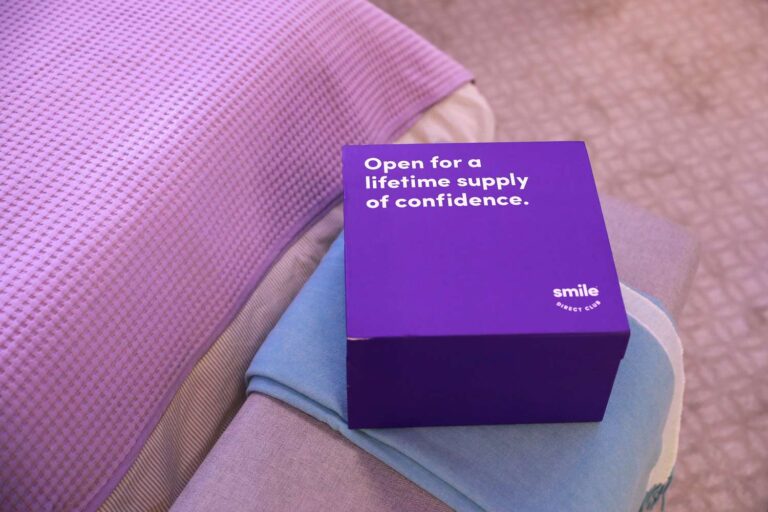Basic Takeaways
- The sudden closure of SmileDirectClub last week left many customers with questions and concerns about their teeth straightening treatment.
- The company has not offered further support for customers who are in the middle of their treatment.
- Some orthodontists offer free consultations to SmileDirectClub customers to determine the best way to proceed with their treatment.
Rebekka Reynolds, 29, was just two months into her teeth aligning treatment with SmileDirectClub when the company announced its closure last week.
“I didn’t see an email. I didn’t get any notification in my app that this was happening. I found out the company was going under because I had a bunch of comments on my TikTok,” Reynolds told Verywell.
SmileDirectClub’s sudden closure has stunned many clients like Reynolds, leaving them with little information on how to proceed with their treatment.
“If something goes wrong in the second half of my treatment, I won’t be able to contact them and ask for replacements or adjustments,” Reynolds said.
Since launching in 2014, SmileDirectClub has positioned itself as an affordable oral care company by selling clear aligners marketed as cheaper and faster alternatives to braces. The company has drawn criticism and safety concerns from medical organizations on its “direct to consumer” approach.
Clear dental aligners, such as those offered by SmileDirectClub and Invisalign, use pressure to slowly straighten teeth. Patients use a new aligner every one to three weeks, and the entire treatment lasts at least a few months.
Although SmileDirectClub had some physical locations, most of its services were offered online. Customers could receive custom aligners in the mail after sending their dental impressions and could do virtual check-ins with a doctor.
However, since its closure, the company has not offered any further support to its existing customers. If you’re a SmileDirectClub customer, here’s what you need to know.
What should existing customers do?
In an FAQ page, SmileDirectClub encourage existing customers to contact their treating doctor or local dentist.
“For those clients who are in the middle of treatment, we would recommend stopping the alignment progression and maintaining the current alignment. Then seek care from a licensed dentist, or preferably, an orthodontist.” Shin-Jung Hsieh, DDS, MSa board-certified orthodontist and clinical assistant professor at The Ohio State University College of Dentistry, told Verywell in an email.
In response to the collapse of SmileDirectClub, some orthodontists offer free consultations.
“Orthodontic treatment is more than just straightening the teeth. It is a medical procedure and requires proper diagnosis, viable treatment plan and monitoring of execution. The one and only advice is, don’t attempt it without professional guidance,” Hsieh said.
If you are going to a consultation, you should bring all accessible records and any questions about your main concern, Hsieh added. You can also expect the orthodontist to take new X-ray images, casts or digital scans of your teeth.
Having some recent records can save you money at the orthodontist’s office. However, you may no longer be able to access the 3D scans of your teeth on the SmileDirectClub app, according to Reynolds, who paid $2,200 up front for her entire treatment.
Should You Switch to Another Online Aligner Company?
Other oral care companies similar to SmileDirectClub, such as Byte and AlignerCo, also offer teeth straightening treatments by mail order. OrthoFX, which recently received FDA approval for its aligners, says SmileDirectClub customers can “seamlessly transition” to its hybrid plan that includes in-person and remote provider visits.
However, the American Dental Association (ADA) advises against direct-to-consumer dental aligners “because of the potential for irreversible harm to individuals, who are treated as ‘customers’ rather than patients.”
“Under nearly all state laws and as reflected in ADA Policy, the dentist is ultimately responsible for the patient’s care and is the only person licensed and qualified to accept responsibility,” the ADA he said in a statement.
Joseph Mullen, DDS, MSorthodontist and lecturer at UCLA School of Dentistry’s Department of Orthodontics, said he would encourage anyone using aligners at home to visit a local orthodontist for a check-in to “make sure their bite, gums, bones and teeth are in a healthy place to continue orthodontic treatment.”
People using SmileDirectClub aligners mentionted broken teeth, nerve damage and pain even before the company closed. Aligner treatment pushes crooked teeth forward to create enough room for them to align, but poorly supervised treatment can go wrong very quickly, according to Mullen.
“I’ve seen cases where patients literally pulled their teeth out by pushing them so far forward that they lost all bone support. And having your teeth fall out — that’s literally the stuff of nightmares,” Mullen said in an email to Verywell.
Some people could get straight teeth from home treatment with little to no ill effects, Mullen added. But he would always ask someone considering these financial aligners the following question: “Is the convenience and cheaper price worth it if something goes wrong?”
What does this mean for you?
If you are a SmileDirectClub customer, you should contact a local dentist or orthodontist for a consultation and checkup. Some orthodontists affiliated with the American Association of Orthodontists offer free consultations. Find one near you here.



:max_bytes(150000):strip_icc()/IMG_2022-126266b3e8274d908aac3ba04e52c36b.jpg)